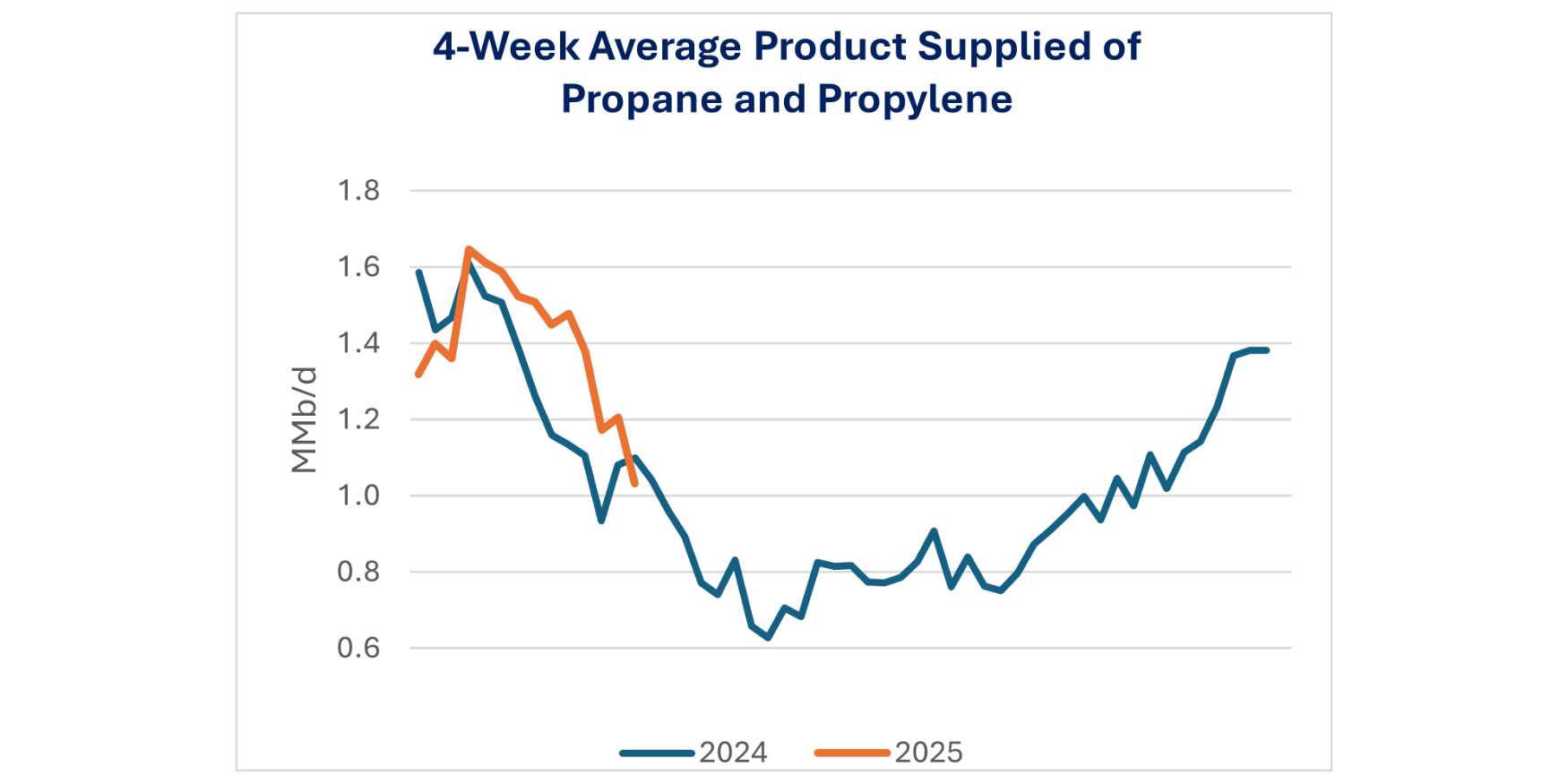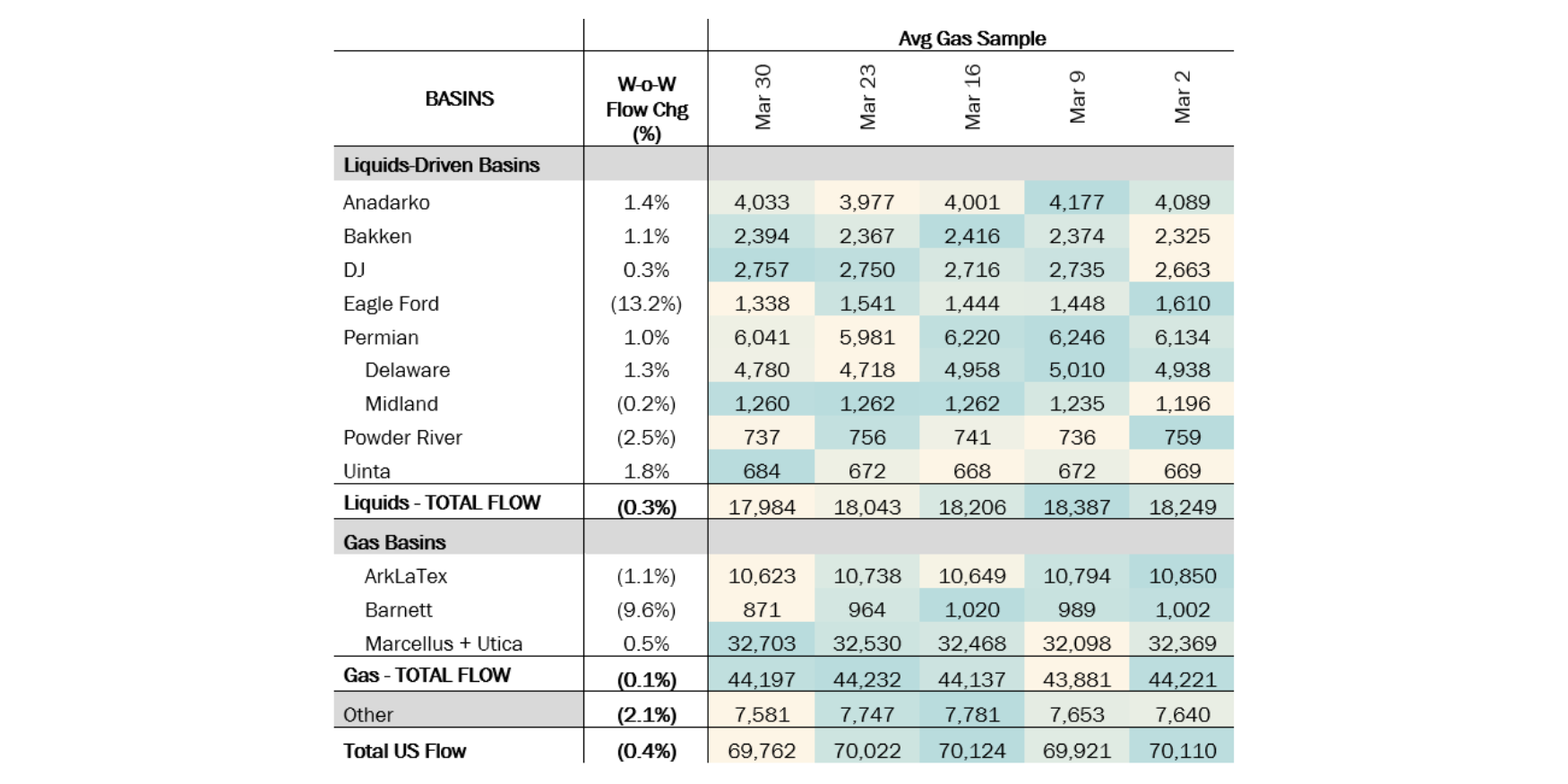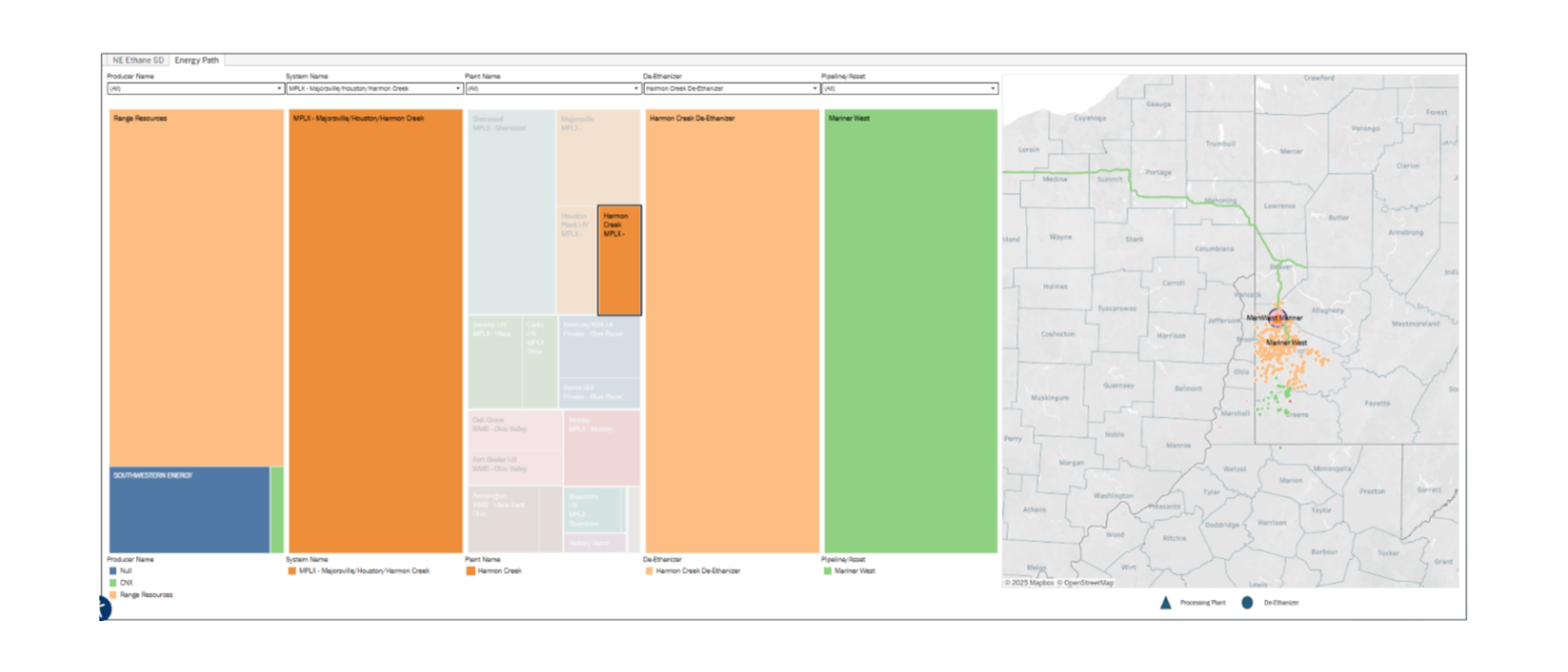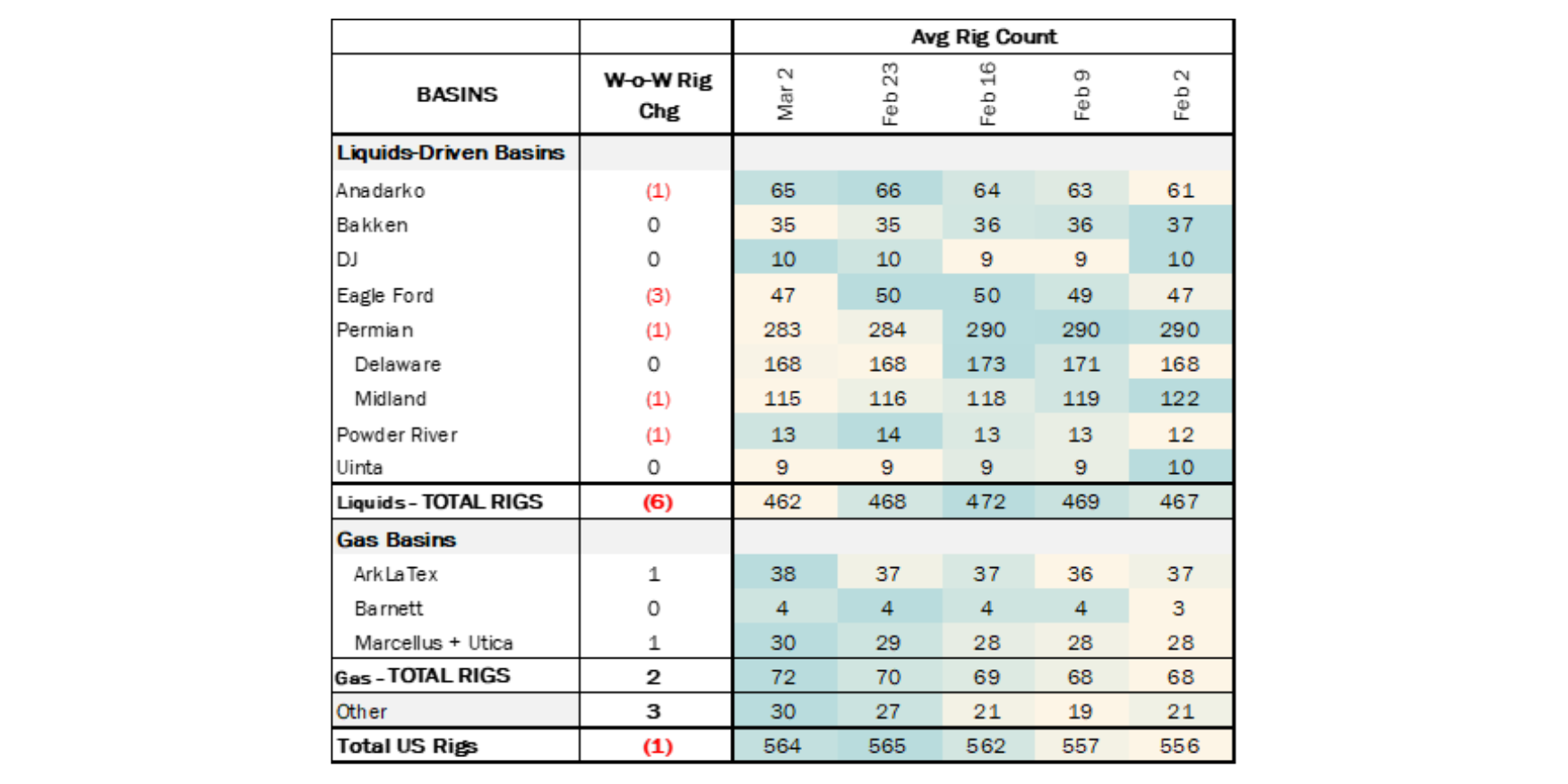Executive Summary: Rigs: The total rig count decreased by 2 for the September 15 week, down to 564 from 566. Flows: Permian flows are up 1% W-o-W with most of the gains coming from the Midland Basin, up 7.7% W-o-W. Infrastructure: Matterhorn Express Pipeline has started flowing gas into pipelines near Katy, marking start-up of the much-anticipated Permian project. Purity Product Spotlight: Propane storage has decreased and may have been “artificially high” in the weekly storage numbers.
Rigs: The total rig count decreased by 2 for the September 15 week, down to 564 from 566. Liquids-driven basins declined by 1 rig W-o-W.
- Delaware (-2): Occidental and Devon Energy (-1) each.
- Midland (+1): Endeavor Energy (+1).
- Anadarko (+2): American Warrior and Freedom Operating (+1) each.

Flows: Permian flows are up 1% W-o-W with most of the gains coming from the Midland Basin, up 7.7% W-o-W. The growth could be producers responding to the start of Matterhorn pipeline at the beginning of October. The new WhiteWater Midstream pipeline is expected to add 2.5 Bcf/d of takeaway capacity from the Permian to the Katy, TX area.
The expansion will relieve constraints in the Permian and should lift Waha prices. We’ve seen a big response already as Waha jumped from $0.11/MMBtu on Monday to $1.48 Thursday as flows ramped. East Daley is monitoring impacts through the Permian and South Texas pipeline samples by tracking shifts in flows and capacity utilization as gas is redirected eastbound.

ArkLaTex flows were relatively flat W-o-W. In recent weeks, Energy Transfer’s Gulf Run Pipeline in Louisiana has experienced a significant increase in southbound deliveries, with 300 MMcf/d flowing to Golden Pass Pipeline (GPPL) since June, setting the stage for future expansions to meet Golden Pass LNG’s demand as the project ramps up.
*W-o-W change is for the two most recent weeks.
Infrastructure: Matterhorn Express Pipeline has started flowing gas into pipelines near Katy, marking start-up of the much-anticipated Permian project. Waha prices jumped this week as the new takeaway opened, though Permian gas prices remain low. East Daley Analytics expects supply growth across Permian commodities in 4Q24 thanks to the Matterhorn start.
Matterhorn began moving gas Tuesday (October 1) on new interconnects with Williams’ (WMB) Transcontinental Gas Pipe Line (Transco) and Enbridge’s (ENB) Texas Eastern Transmission (TETCO) systems in southeastern Texas. Matterhorn delivered 180 MMcf/d at Transco’s Clarks Branch receipt point in Wharton County and 137 MMcf/d at TETCO’s Hillboldt Road interconnect in Austin County, according to the pipelines’ electronic bulletin boards. Natural Gas Pipeline of America (NGPL) also has added a Matterhorn receipt point near Katy but is not yet flowing gas.

Led by WhiteWater Midstream, the new 42-inch pipeline runs ~580 miles from the Waha hub in West Texas to Katy outside Houston. Waha prices jumped 34c on Tuesday to $0.45/MMBtu and increased to $0.62 Wednesday on the bullish news. Permian gas prices have frequently traded negative since August as egress pipes filled and Kinder Morgan (KMI) conducted extended maintenance work on the El Paso system.
EDA expects oil, gas and NGL supply growth to pick up in the Permian following the start of Matterhorn. Targa Resources (TRGP) has expedited the in-service date (ISD) for its Daytona NGL pipeline expansion to coincide with the Matterhorn ISD (refer to the figure below). Targa will have the first of many NGL expansion projects, and will benefit from being the first to expand NGL egress in a tight Permian takeaway market. Enterprise’s Bahia and other expansion projects are scheduled to come online in 2025.
Purity Product Spotlight: Propane storage has decreased and may have been “artificially high” in the weekly storage numbers. We suspect excess propane may have hit public storage hubs to make room for ethane in private storage. The contango shape of ethane in early August ’24 incentivized NGL storage operators to fill as much of their private storage as possible by selling forward ethane in September, October and November. The decrease in propane and propylene storage could be the unwinding of prior inflated propane storage.











-1.png)



-1.png)
-3.png)